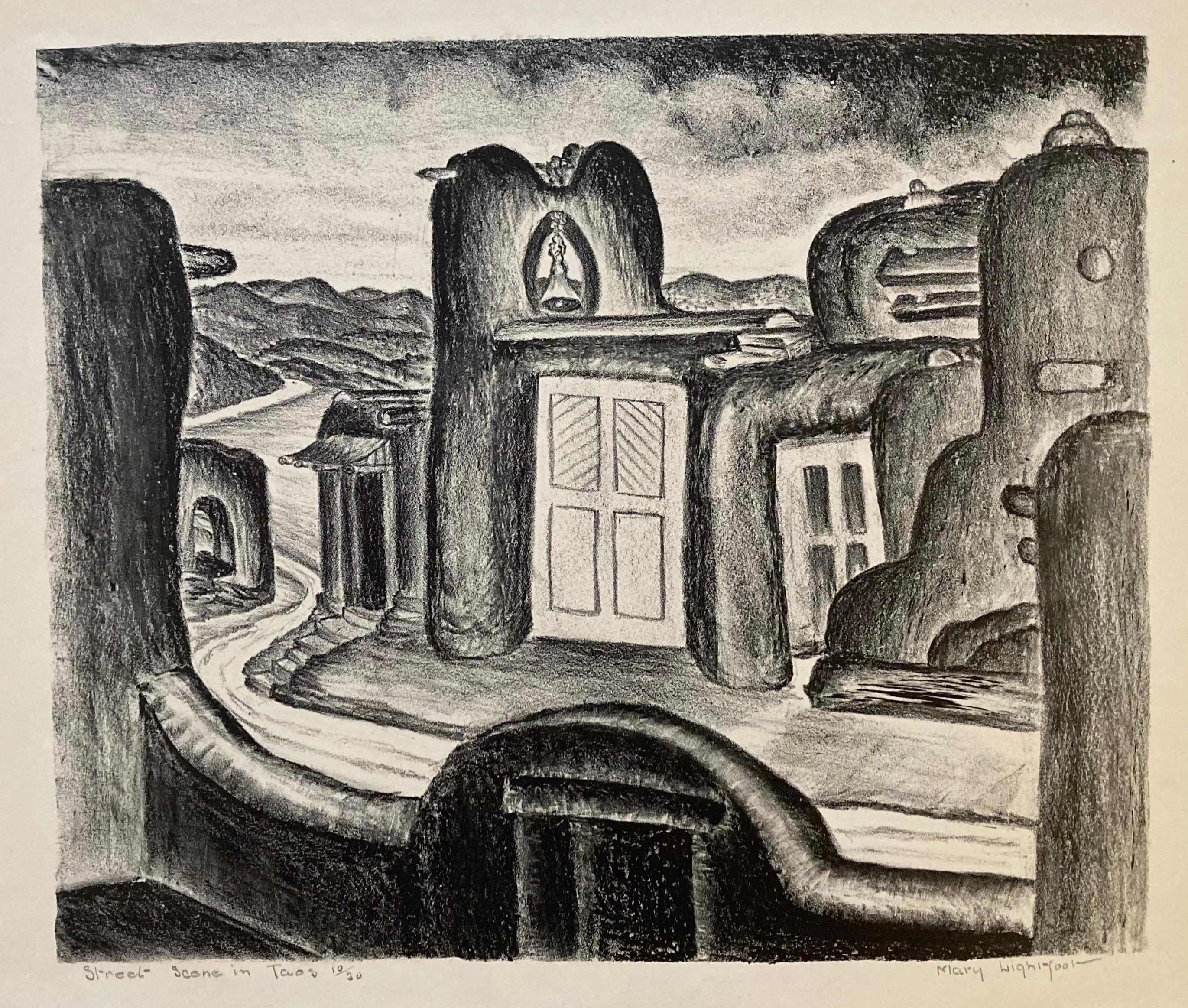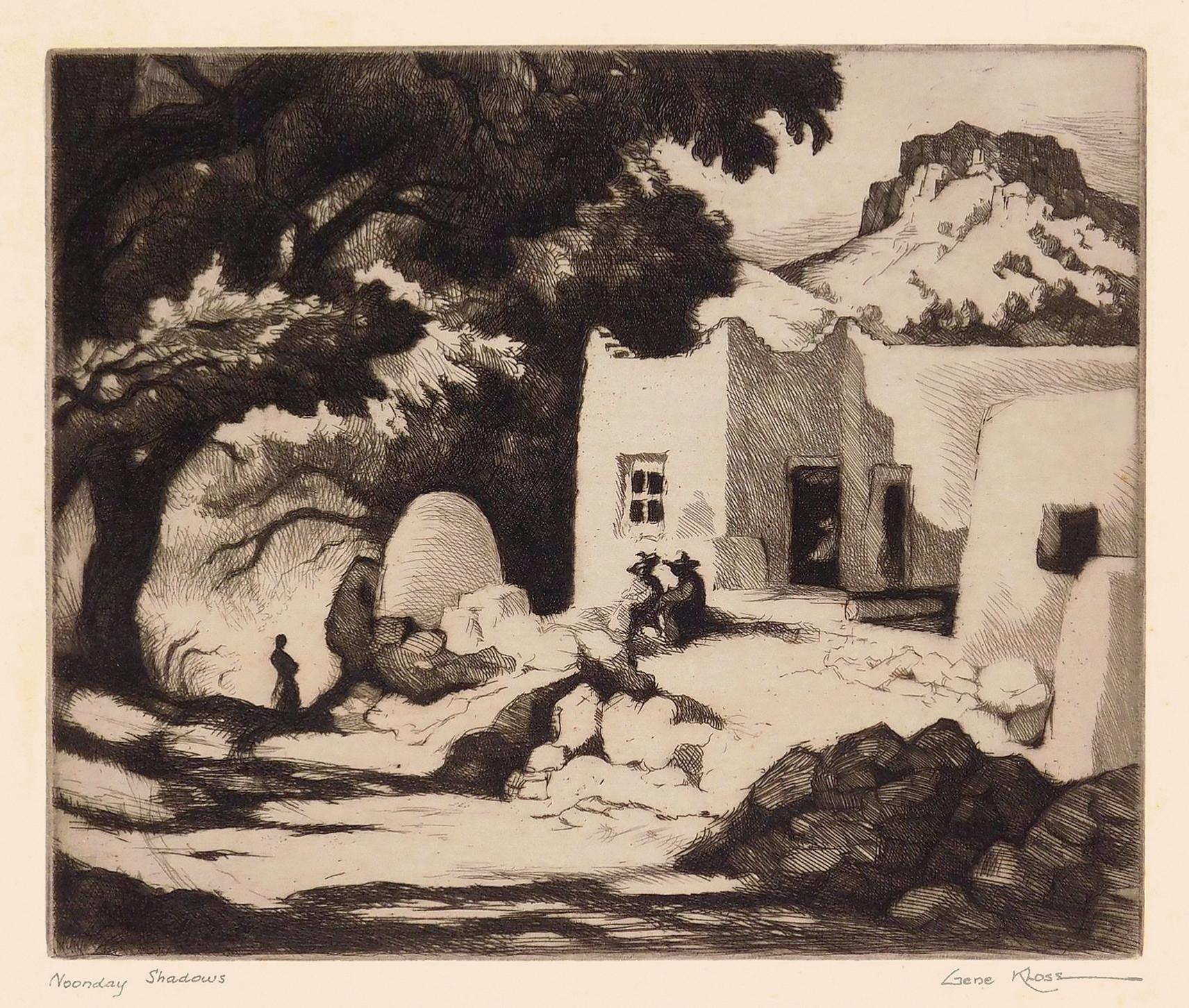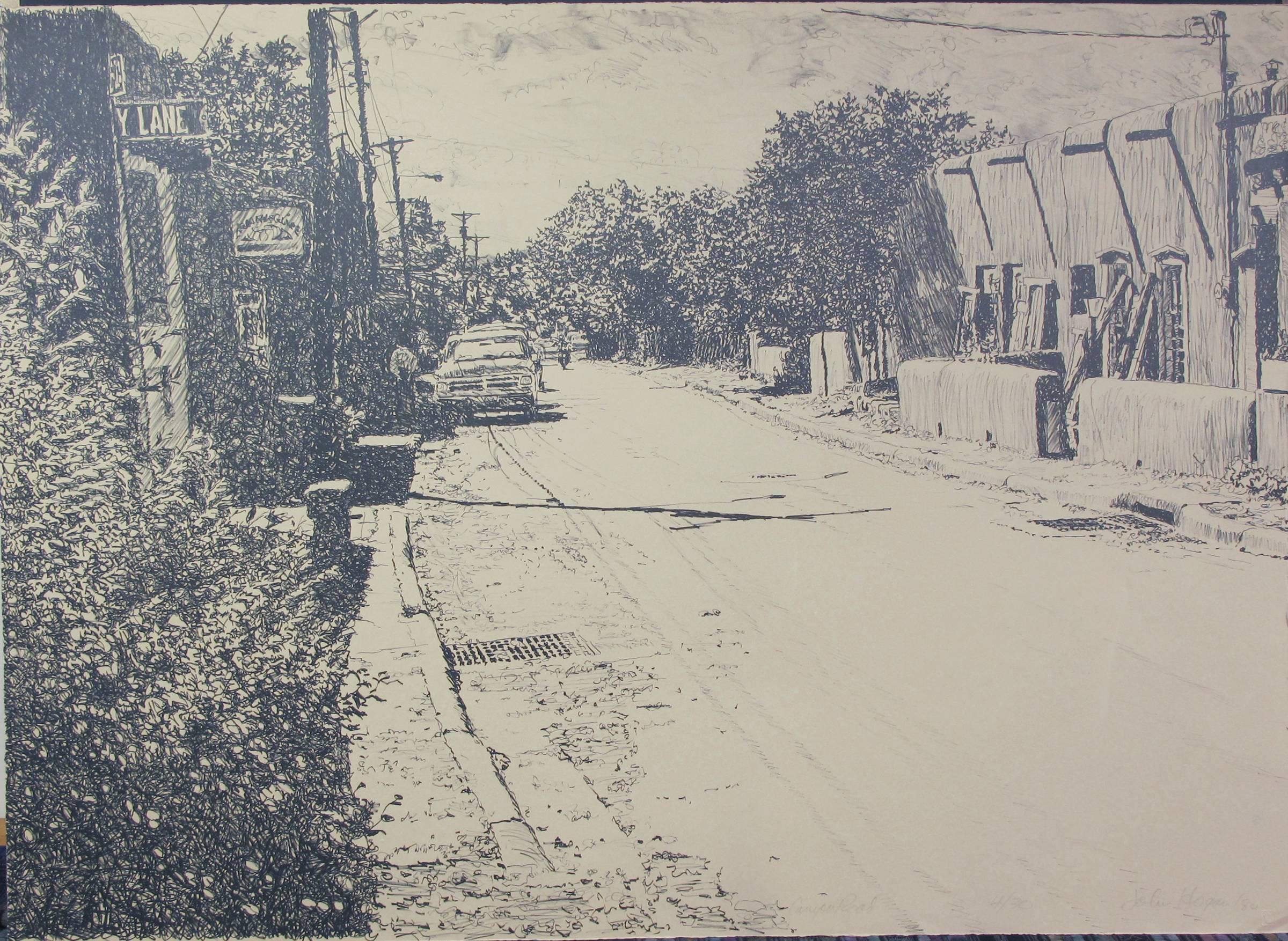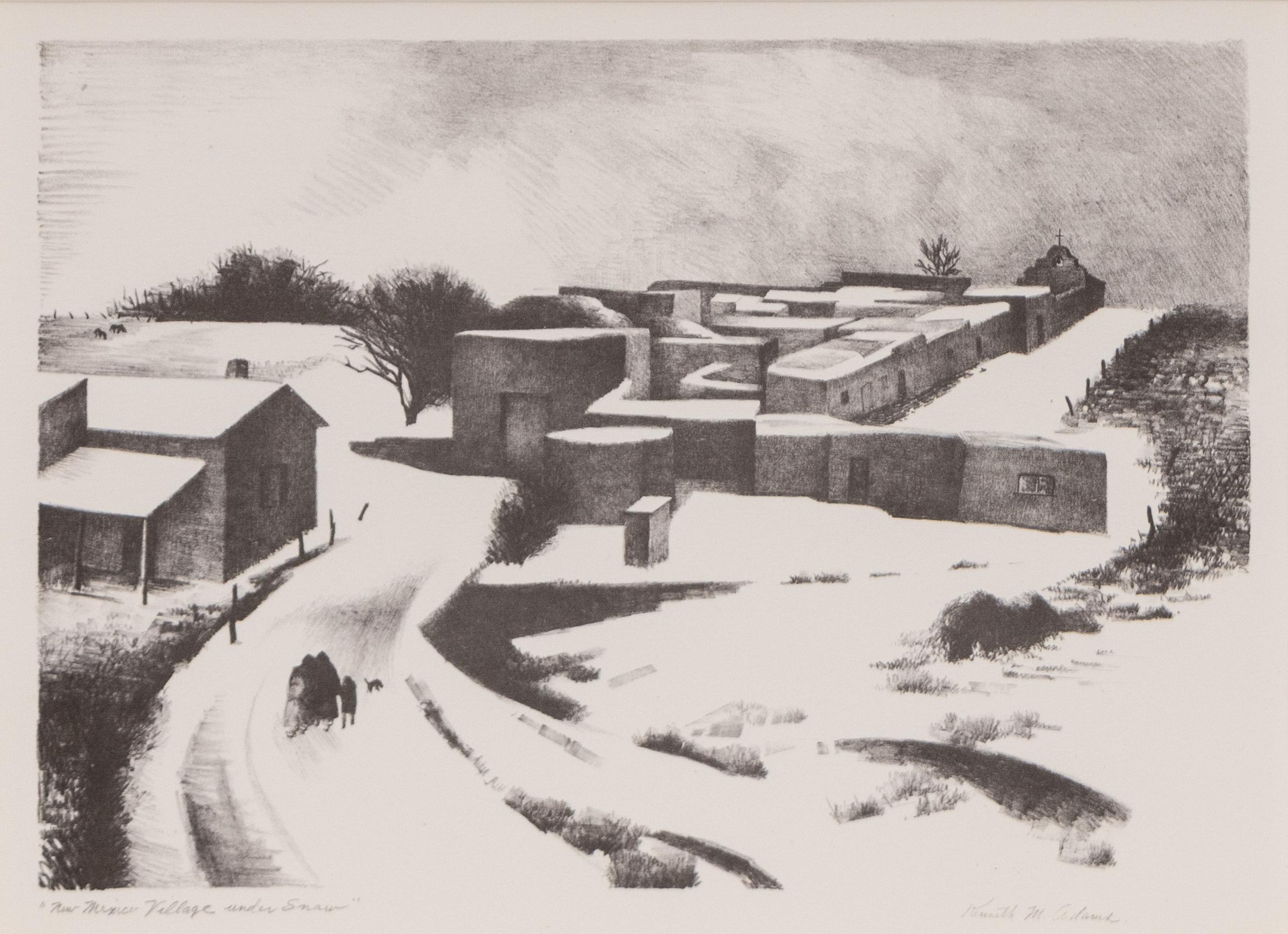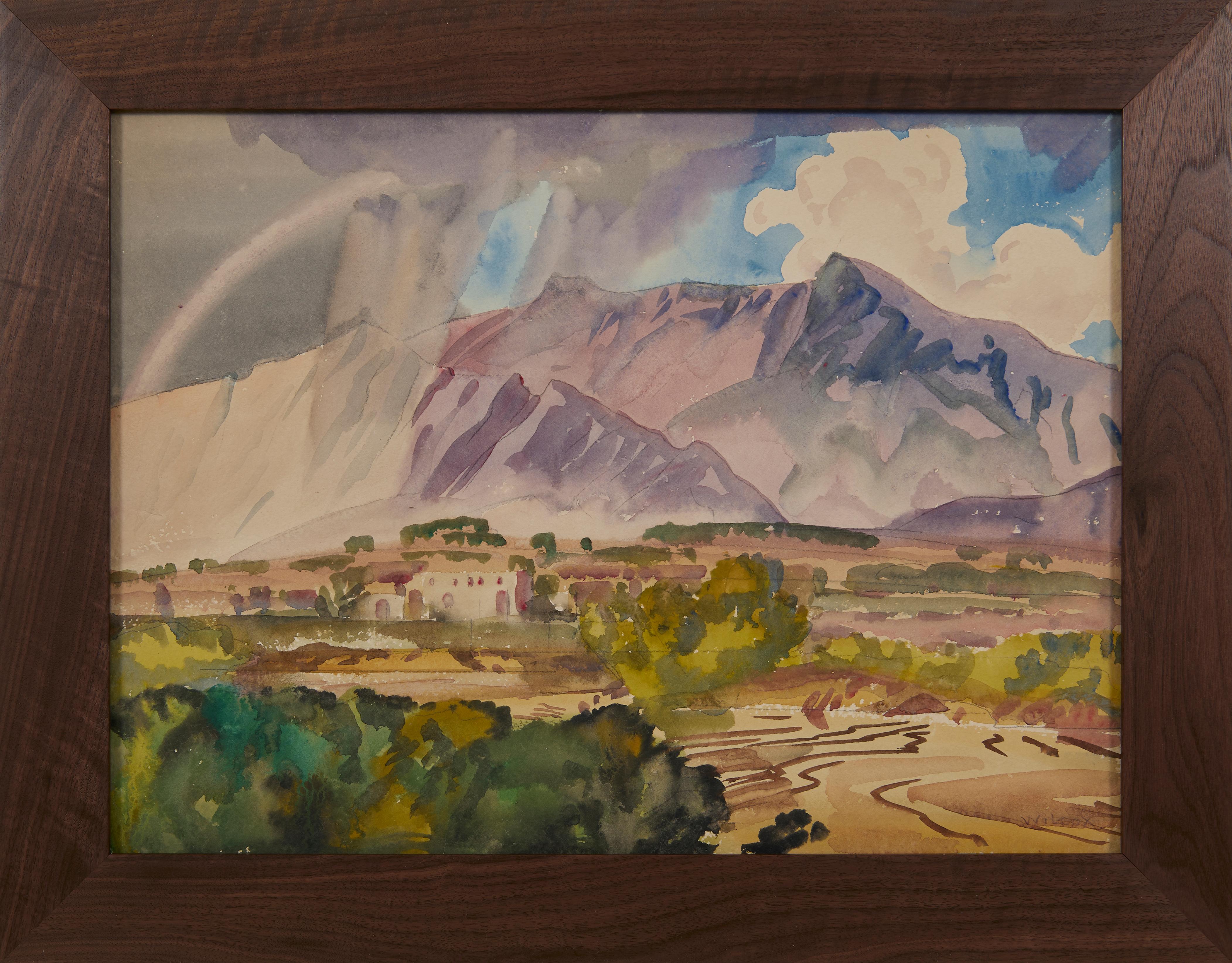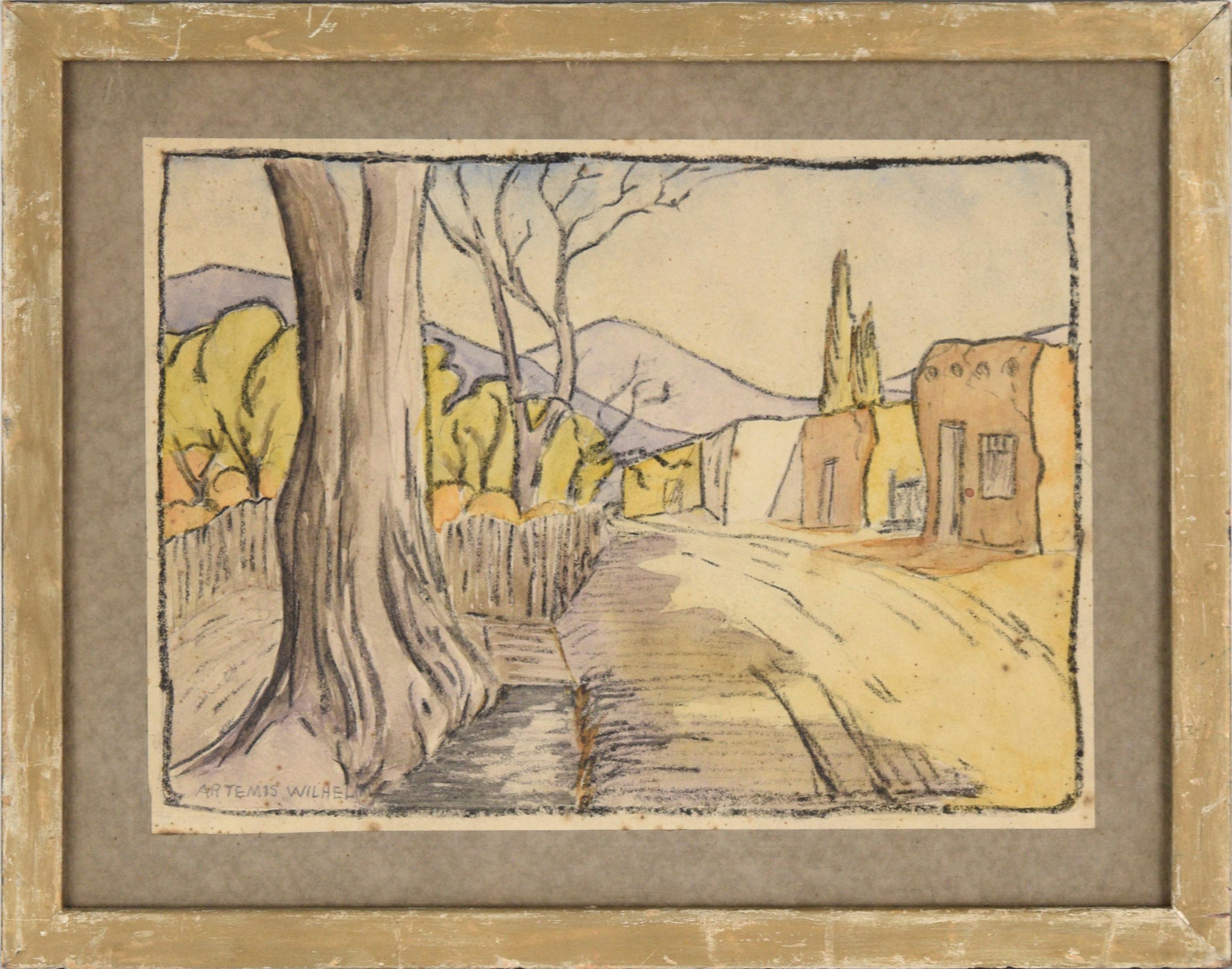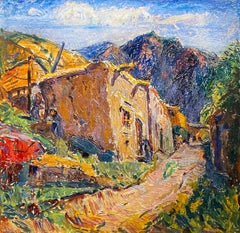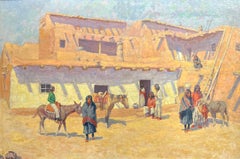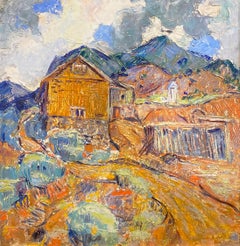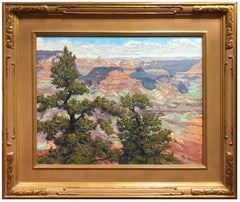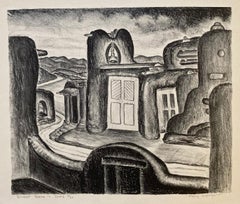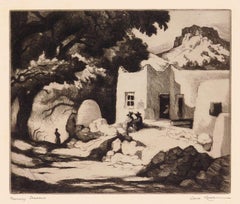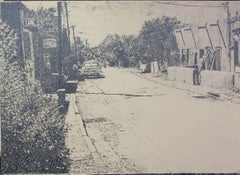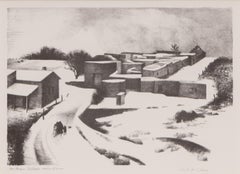Items Similar to Canyon Road, Sante Fe
Video Loading
Want more images or videos?
Request additional images or videos from the seller
1 of 9
Will (William Howard) ShusterCanyon Road, Sante Fe
Price Upon Request
Price Upon Request
Price Upon Request
Price Upon Request
Price Upon Request
Price Upon Request
Price Upon Request
Price Upon Request
Price Upon Request
Price Upon Request
About the Item
Canyon Road, Santa Fe
By. William Howard Shuster (American, 1893-1969)
Signed Lower Right
Edition of 100 Lower Center
Titled Lower Left
Unframed: 4" x 4.75"
Framed: 15.75" x 15.25"
A realist and early modernist painter, graphic artist, illustrator, and sculptor, Will Shuster became known primarily for his work in New Mexico where in 1920, he settled in Santa Fe, having been encouraged to come there by John Sloan. He had studied electrical engineering at the Drexel Institute in Philadelphia and later was a student of Sloan's in Santa Fe in both etching and painting.
He was in World War I, where he suffered a gas attack. On his return, he studied with J William Server in Philadelphia but was advised to go West for his health.
In Santa Fe in 1921, he became one of the founding members of Los Cinco Pintores, artists who responded to the New Mexico environment including the Penitentes in a respectful way and modernist, abstract style. Later he became more realist in style. He also illustrated a frontier biography, "My Life on the Frontier," by Governor M.A. Otero.
His income was supplemented by his disability pension.
- Creator:Will (William Howard) Shuster (1893-1969, American)
- Dimensions:Height: 4 in (10.16 cm)Width: 4.75 in (12.07 cm)
- Medium:
- Movement & Style:
- Period:
- Condition:
- Gallery Location:Missouri, MO
- Reference Number:1stDibs: LU747312011312
About the Seller
5.0
Vetted Professional Seller
Every seller passes strict standards for authenticity and reliability
Established in 1970
1stDibs seller since 2017
155 sales on 1stDibs
Typical response time: 1 to 2 days
- ShippingRetrieving quote...Shipping from: Missouri, MO
- Return Policy
Authenticity Guarantee
In the unlikely event there’s an issue with an item’s authenticity, contact us within 1 year for a full refund. DetailsMoney-Back Guarantee
If your item is not as described, is damaged in transit, or does not arrive, contact us within 7 days for a full refund. Details24-Hour Cancellation
You have a 24-hour grace period in which to reconsider your purchase, with no questions asked.Vetted Professional Sellers
Our world-class sellers must adhere to strict standards for service and quality, maintaining the integrity of our listings.Price-Match Guarantee
If you find that a seller listed the same item for a lower price elsewhere, we’ll match it.Trusted Global Delivery
Our best-in-class carrier network provides specialized shipping options worldwide, including custom delivery.More From This Seller
View AllSun Mountain, Adobes, Santa Fe, New Mexico
By Julius Lars Hoftrup
Located in Missouri, MO
Sun Mountain, Adobes, Santa Fe, New Mexico
By Julius Lars Hoftrup
Unframed: 20" x 20"
Framed: 26" x 26"
Hofterup in Skane was the birthplace of J. Lars Hoftrup. Hoftrup immigrated to a farm in New York in 1881 but left to study at Cooper Union Art School and later made study journeys to paint landscapes in Canada, France, and North Africa.
His work has been shown in exhibitions at the Phillips...
Category
20th Century Land Landscape Paintings
Materials
Oil, Panel
Price Upon Request
Mid-day, Zuni Village
By Frank Reed Whiteside
Located in Missouri, MO
Mid-day, Zuni Village, 1897
By. Frank Reed Whiteside (American, 1866-1929)
Unframed: 20" x 30"
Framed: 28" x 38"
Frank Reed Whiteside, born in Philadelphia on 20 August 1867, became a student of Thomas Anshutz at the Pennsylvania Academy of the Fine Arts (1888-92). He already began exhibiting there during his student years (1887-98). In 1893, he enrolled in the Académie Julian in Paris where he received instruction from Jean-Paul Laurens and Benjamin Constant. After his French academic training, Whiteside taught art in Philadelphia high schools. He took frequent trips to the Southwest between 1890 and 1928 to live with and paint the Zuni Indians. Whiteside depicted ceremonial dances, Zuni buildings, and other genre scenes, usually in blinding afternoon sunlight. He carefully observed the effects of light on vibrant color, using a finely crafted impressionist technique. He was fond of broad areas of color, subtle combinations of hues, and simplified shapes and silhouettes. Whiteside continued to exhibit at the PAFA (1905-15), at the Art Institute of Chicago (1896-1916), at the Carnegie International (1905 and 1907) and at the Corcoran Gallery (1907). He was a member of Philadelphia art societies and beginning in 1909 had a summer studio in Ogunquit, Maine, where he took part in Hamilton Easter Field's discussion groups. Frank's wife, Clara Walker Whiteside, who published Touring New England in 1926, was active in the Ogunquit Art Association.
Like Stanford White, Frank Reed Whiteside was the victim of murder, on 19 September 1929, but Whiteside's case remains unsolved. One night, the sixty-three year-old painter answered the doorbell. Two witnesses...
Category
Late 19th Century Other Art Style Figurative Paintings
Materials
Canvas, Oil
Price Upon Request
Old Miner's House, Sante Fe, New Mexico
By Julius Lars Hoftrup
Located in Missouri, MO
Old Miner's House, Santa Fe, New Mexico
By Julius Lars Hoftrup (1874-1954)
Unframed: 20" x 20"
Framed: 26" x 26"
Hofterup in Skane was the birthplace of J...
Category
20th Century Land Landscape Paintings
Materials
Oil, Panel
Price Upon Request
The Grand Canyon
By Billyo O'Donnell
Located in Missouri, MO
Billyo O'Donnell (American, 20th C.)
"The Grand Canyon"
Oil on Panel
22 x 29 inches
32 x 38 inches framed
“For more than two decades I’ve been intrigued by the way a painting’s surf...
Category
21st Century and Contemporary American Impressionist Landscape Paintings
Materials
Oil, Panel
Price Upon Request
Fodder
By John Costigan
Located in Missouri, MO
Fodder by John Costigan (1888-1972)
Signed Lower Right
Titled Lower Left
9.75" x 12.75" Unframed
17.5" x 19.75" Framed
John Edwards Costigan was born in Providence, Rhode Island on ...
Category
20th Century American Impressionist Landscape Prints
Materials
Etching
Price Upon Request
San Miguel, Mexico
By Dong Kingman
Located in Missouri, MO
San Miguel, Mexico
By Dong Kingman (American, 1911-2000)
Unframed: 22" x 15"
Framed: 31" x 24"
Signed Lower Left
Born in Oakland, CA on March 31, 1911. When Kingman was five, his family moved to Hong Kong where he grew up and attended Lingnan Grammar School. The headmaster of the school, Szetu Wei, had studied painting in Paris and recognized his budding artistic talent. For several years he trained young Kingman in both oriental and occidental approaches to painting. Returning to San Francisco in 1929, Kingman became active in the local art scene and began painting scenes of the city. His first solo show at the San Francisco Art Center in 1936 brought immediate recognition. During the 1930s he spent five years working on commissions for the Federal Public Works of Art Project. During WWII he created maps and charts for the O.S.S. After the war Kingman settled in NYC and taught at Columbia University. His paintings were used as backdrops for the movie "Flower Drum Song...
Category
20th Century American Modern Landscape Drawings and Watercolors
Materials
Watercolor
Price Upon Request
You May Also Like
Mary Lightfoot, Street Scene in Taos
Located in New York, NY
Mary Lightfoot was born in Ravenna, Texas. She studied at the College of Industrial Arts in Denton and the North Texas State Teachers College prior to receiving a master of arts degree from Columbia University. Her entire teaching career was with the Dallas Public School system; she summered in Europe...
Category
Mid-20th Century American Modern Landscape Prints
Materials
Lithograph
'Noonday Shadows' — Mid-Century Southwest Regionalism
By Gene Kloss
Located in Myrtle Beach, SC
'Noonday Shadows', etching and drypoint, edition 75, 1941, Kloss 376. Signed, and titled in pencil. A superb, richly inked impression, in warm black ink, on buff wove paper, in excel...
Category
1950s American Modern Landscape Prints
Materials
Drypoint, Etching
Canyon Road, by John Hogan, lithograph, edition, black, white, Santa Fe
By John Hogan (American)
Located in Santa Fe, NM
Canyon Road, by John Hogan, lithograph, edition, black, white, Santa Fe
hand pulled lithograph edition signed and numbered by the artist
unframed
30 x 44 paper size
John Hogan A gr...
Category
1980s Contemporary Landscape Prints
Materials
Lithograph
1950s Signed New Mexico Winter Lithograph – Original Vintage Snowy Landscape Art
By Kenneth Miller Adams
Located in Denver, CO
Step into the serene beauty of a New Mexico winter with this stunning 1950s signed lithograph, New Mexico Village Under Snow, by acclaimed artist Kenneth Miller Adams. This rare vint...
Category
1950s American Modern Landscape Prints
Materials
Lithograph
Rainbow on Santa Fe Trail, New Mexico, Early 20th Century Western Landscape
By Frank Wilcox
Located in Beachwood, OH
Frank Nelson Wilcox (American, 1887–1964)
Rainbow on Santa Fe Trail, New Mexico, c. 1937
Watercolor on paper
Signed lower right, titled verso
15 x 20 inches
18.5 x 24 inches framed
...
Category
1930s American Modern Landscape Drawings and Watercolors
Materials
Watercolor
Road at the Edge of Town, Landscape
Located in Soquel, CA
Watercolor of a village by Artemis Wilhelm (American, 20th Century). Bold pastel outlines create solid shapes, filled with watercolor to create tone an...
Category
Mid-20th Century American Impressionist Landscape Drawings and Watercolors
Materials
Paper, Pastel, Watercolor
More Ways To Browse
William Wills
1920 Server
Delta Airlines Vintage
Drypoint Etching River
Imaginations And Objects Of The Future Portfolio
James Ulmer
Lassen Print
Magritte Clouds
Peter Max Vase
Six Penny
Thomas Mcknight Signed
1980s Backpacks
Blue Peter Flag
Carlos Almaraz
Courtroom Sketches
Dali French Railway
Martin Lewis Etching
Robert Kipniss Lithograph
